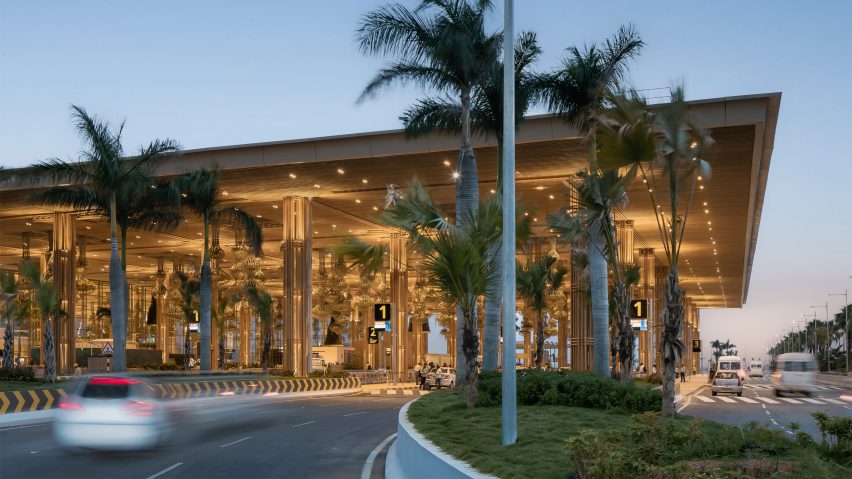
SOM designs "terminal in a garden" for Bangalore airport
Global architecture studio SOM has designed a terminal for the Kempegowda International Airport in Bangalore, India, that draws on the city's heritage and landscape.
Designed by SOM as a "terminal in a garden", the plant-filled project, created in collaboration with Abu Jani and Sandeep Khosla (AJSK), and Grant Associates, aims to propose a calming alternative to the bustle of a typical international airport.
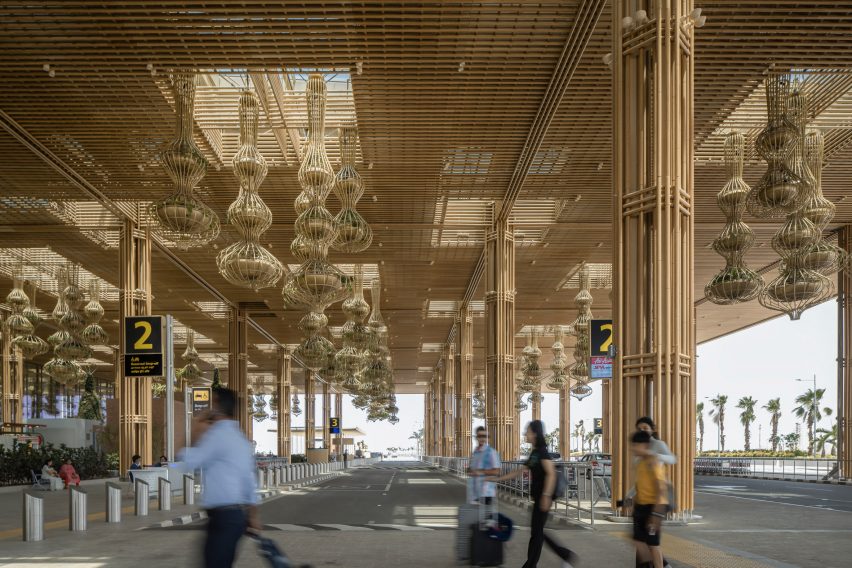
"Terminal 2 (T2) inverts every expectation of how an airport can look and feel," design principal Peter Lefkovits told Dezeen.
"With a focus on rich, sensory experiences rooted in nature, we created a calming oasis within the bustle of an international airport."
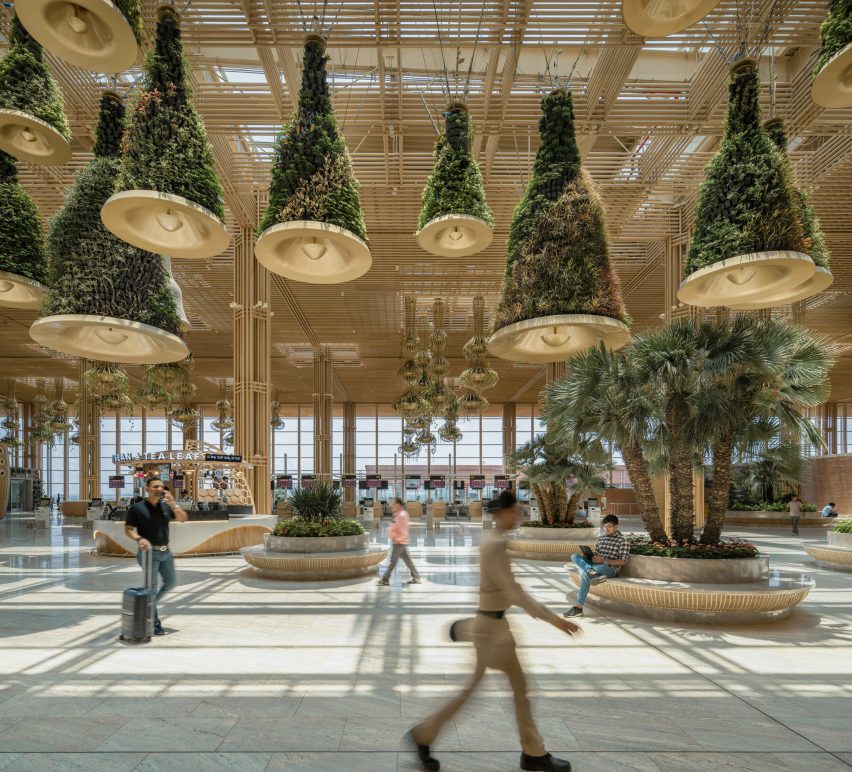
The 255,000-square-metre terminal is fronted by a transit hub that will serve as a key connection point between the existing Bangalore International Airport Limited (BIAL) and Bangalore city, while also accommodating outdoor retail, event and entertainment space.
Inside, the studio adorned the terminal's engineered bamboo structure with hanging plants and greenery, creating bright and airy interiors lit by roof openings.
"Inspired by the 'garden city' heritage of Bengaluru, India, the client originally proposed a simple, yet captivating idea: to design a 'terminal in a garden'," Lefkovits explained.

Visitors navigate the terminal through a sequence of spaces connected by bridges and pathways, interspersed by water features and stepped gardens.
The "forest belt", a 90-metre-wide landscaped stretch, provides distinction between the main block – housing check-in and security – and the terminal's gates.
Complementing the terminal's bamboo structure, bespoke furnishings clad with locally sourced granite, red bricks and traditionally woven rattan were used throughout the interior.
"The idea was to radically reimagine the travel experience by connecting passengers to nature along each step of their journey," Lefkovits said.
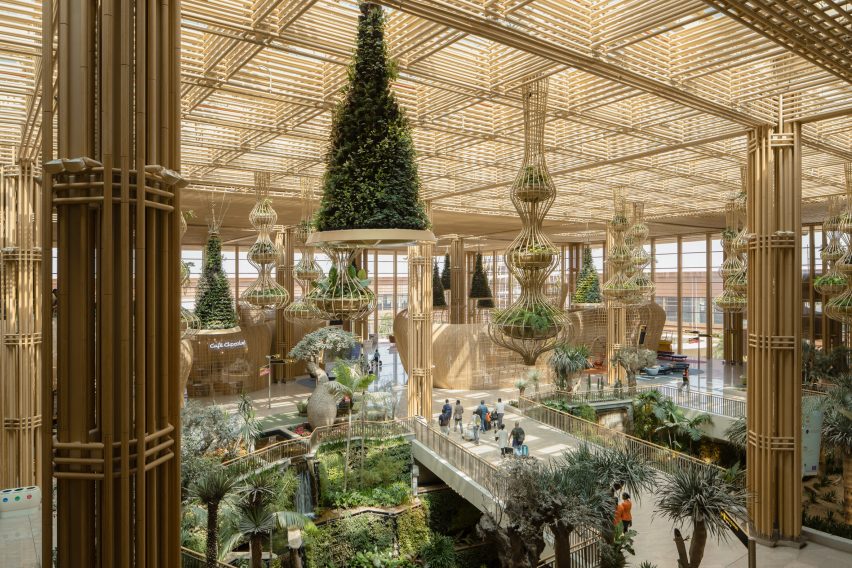
According to the studio, the implementation of sustainable strategies enables the terminal to run solely on renewable energy.
"[The terminal] also implements sophisticated, holistic sustainable design strategies," Lefkovits explained.
"Some of these strategies include extensive solar sharing and intelligent building systems, as well as the use of renewable materials."
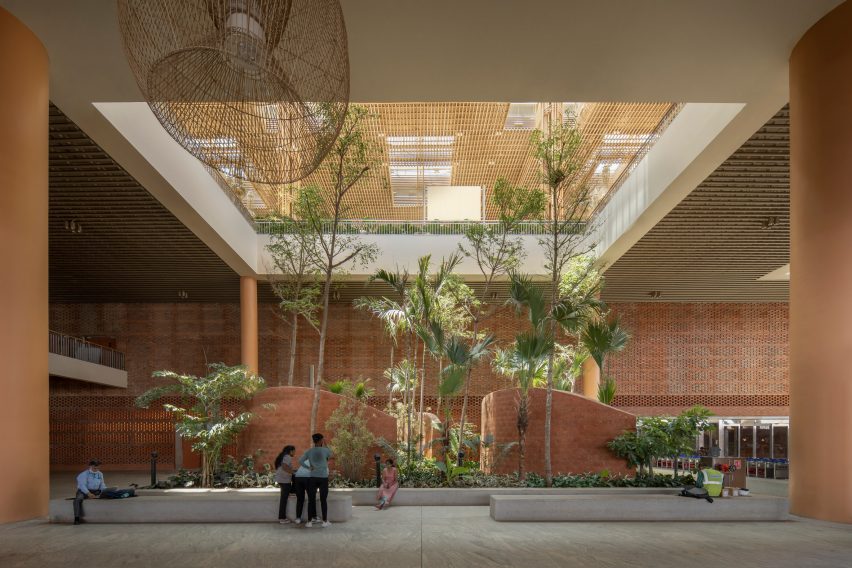
The terminal increases the airport's annual capacity by 25 million passengers, with the structural system also designed to enable future alterations as needed.
Other projects recently completed by SOM include the restoration of New York's historic Lever House and a block-long timber bridge connected to Manhattan's High Line.
The photography is by Studio Recall.